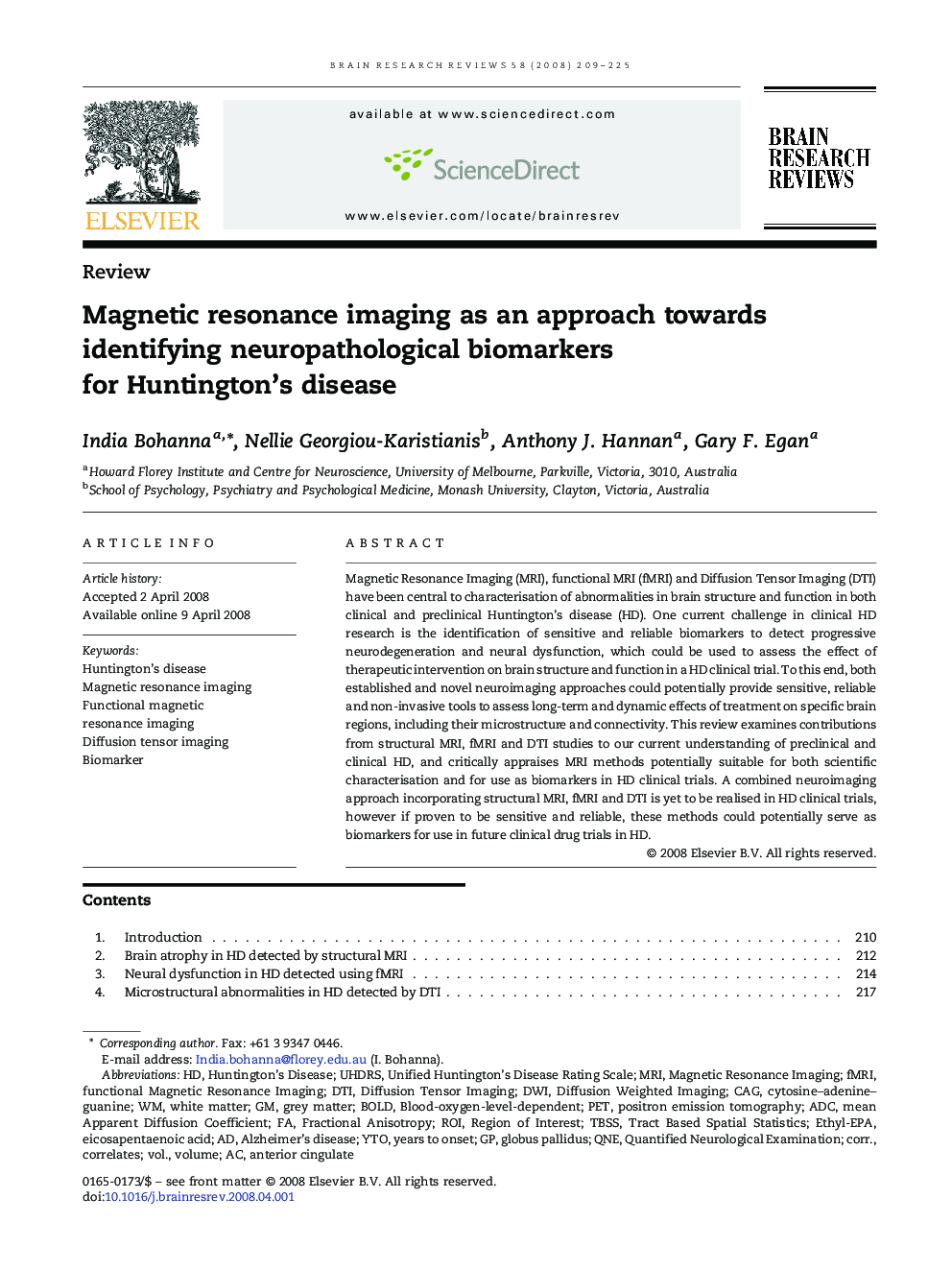| Article ID | Journal | Published Year | Pages | File Type |
|---|---|---|---|---|
| 4333762 | Brain Research Reviews | 2008 | 17 Pages |
Magnetic Resonance Imaging (MRI), functional MRI (fMRI) and Diffusion Tensor Imaging (DTI) have been central to characterisation of abnormalities in brain structure and function in both clinical and preclinical Huntington's disease (HD). One current challenge in clinical HD research is the identification of sensitive and reliable biomarkers to detect progressive neurodegeneration and neural dysfunction, which could be used to assess the effect of therapeutic intervention on brain structure and function in a HD clinical trial. To this end, both established and novel neuroimaging approaches could potentially provide sensitive, reliable and non-invasive tools to assess long-term and dynamic effects of treatment on specific brain regions, including their microstructure and connectivity. This review examines contributions from structural MRI, fMRI and DTI studies to our current understanding of preclinical and clinical HD, and critically appraises MRI methods potentially suitable for both scientific characterisation and for use as biomarkers in HD clinical trials. A combined neuroimaging approach incorporating structural MRI, fMRI and DTI is yet to be realised in HD clinical trials, however if proven to be sensitive and reliable, these methods could potentially serve as biomarkers for use in future clinical drug trials in HD.
